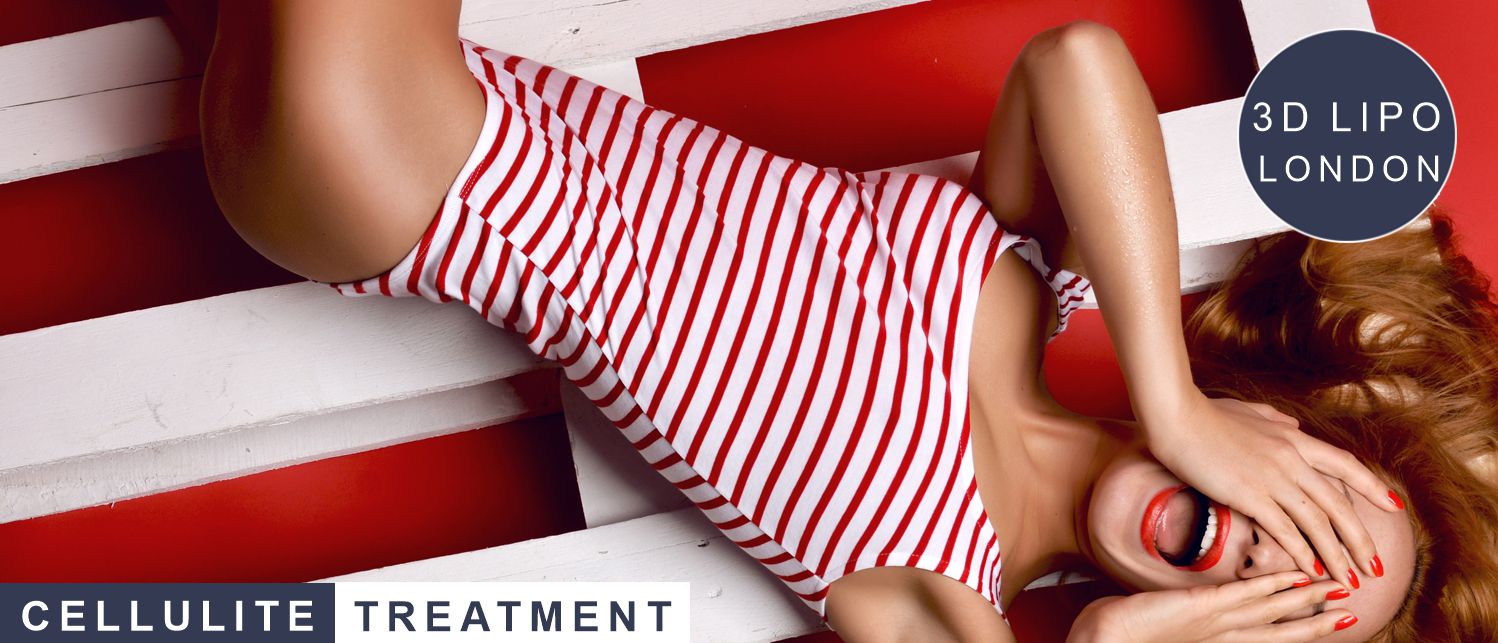
Cellulite Treatment London - Professional Cellulite Reduction Marylebone
Premier Cellulite Clinic Near Baker Street | Advanced Technology | From £89
Welcome to London's leading cellulite treatment clinic in Marylebone, where cutting-edge technology meets expert care. Located just 5 minutes from Baker Street station, our state-of-the-art cellulite reduction center offers professional treatments starting from just £89.
Our advanced cellulite treatments include radiofrequency therapy, acoustic wave technology, and specialized cellulite massage. Whether you're searching for "cellulite treatment near me" or the best anti-cellulite clinic in Central London, our proven protocols deliver visible results with no downtime - perfect for your busy lifestyle!
Last updated: August 23, 2025
What is Cellulite Treatment?
Cellulite treatment is an advanced non-surgical approach that targets the structural causes of dimpled, uneven skin texture. Our professional cellulite reduction combines multiple technologies including radiofrequency, acoustic wave therapy, and specialized massage to address fibrous bands, improve circulation, and stimulate collagen production. This comprehensive approach delivers 50-75% improvement in cellulite appearance at our cellulite clinic near Baker Street.
The treatment is suitable for all skin types and addresses cellulite on thighs, buttocks, abdomen, hips, and arms. Each session is customized to your specific cellulite pattern and severity, ensuring optimal results at our cellulite treatment center Marylebone.
How Does Cellulite Treatment Work?
Our cellulite treatments work through a powerful combination of technologies at our anti-cellulite clinic:
- Radiofrequency: Delivers thermal energy deep into tissue to stimulate collagen and tighten skin
- Shockwave Therapy: Targeted energy waves break down fibrous bands causing dimpling
- Specialized Massage: Improves circulation and lymphatic drainage
- Tissue Remodeling: Gradual improvement in skin structure and appearance
- Collagen Stimulation: Long-term skin quality improvement
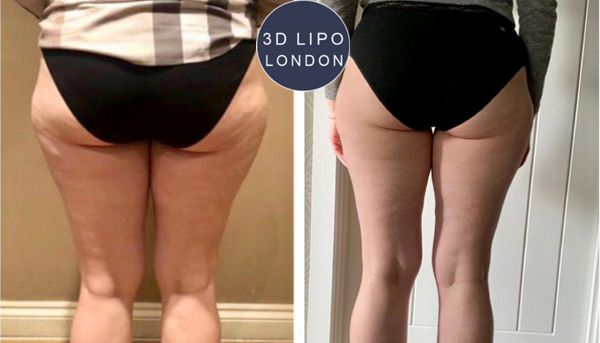
Cellulite reduction treatment
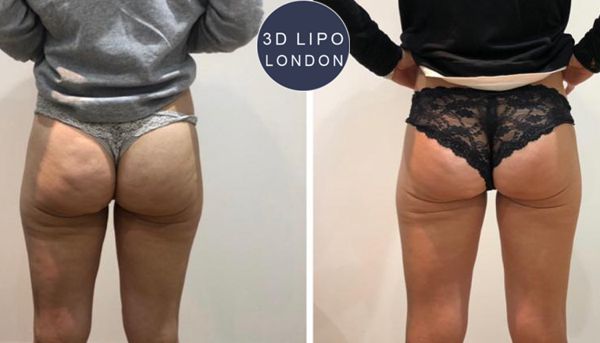
Visible Results After Treatment Course
The Cellulite Treatment Process Step-by-Step
Your Journey to Smoother Skin
Step 1 - Comprehensive Assessment
We analyze your cellulite pattern, skin quality, and contributing factors. Digital imaging may be used to track progress. This assessment helps create your personalized treatment plan.
Step 2 - Skin Preparation
The treatment area is cleansed and prepared. Conductive gel is applied for radiofrequency treatments. You'll be positioned comfortably for optimal treatment access.
Step 3 - Radiofrequency Application
Controlled thermal energy is delivered to stimulate collagen production and tighten skin. You'll feel a warming sensation that's comfortable and relaxing.
Step 4 - Shockwave Therapy
Targeted shockwave energy breaks down fibrous bands and improves tissue elasticity. This feels like gentle pulsing on the skin.
Step 5 - Specialized Massage
Advanced massage techniques enhance circulation and lymphatic drainage. This helps reduce fluid retention and improve skin texture.
Step 6 - Post-Treatment Care
Soothing cream is applied. You'll receive aftercare instructions and book your next session. No downtime - return to normal activities immediately.
Cellulite Treatment Options & Pricing
Choose Your Treatment Package
Skin Tightening X1 - £99 £89
Perfect for: First-time clients, maintenance sessions, targeted treatment
Includes:
- Full cellulite assessment
- One professional treatment session
- Radiofrequency skin tightening
- Cellulite reduction technology
- Aftercare advice
Skin Tightening X8 - £792 £659
Perfect for: Significant cellulite reduction, visible improvement, most popular choice
Includes:
- Comprehensive initial assessment
- 8 full treatment sessions
- Progress tracking and photos
- Combined technologies for best results
- Priority booking
- Save £233 compared to individual sessions
Skin Tightening + Shockwave X8 - £1420 £1199
Perfect for: Advanced cellulite treatment, maximum results, comprehensive approach
Includes:
- Full body cellulite mapping
- 8 combination treatment sessions
- Radiofrequency skin tightening
- Shockwave therapy for deep tissue
- Before/after photography
- Lifetime maintenance discount
- Save £221 on this premium package
Shockwave Treatment Options
Targeted Cellulite Reduction with Shockwave Technology:
Cellulite Reduction (1 area)
- Single Session: £60
- 6 Sessions: £300 (Save up to £60 - 17%)
- 8 Sessions: £400 (Save up to £80 - 17%)
Combined Areas (2 areas)
- Single Session: £100
- 6 Sessions: £480 (Save up to £120 - 20%)
- 8 Sessions: £640 (Save up to £160 - 20%)
Combination Package Special
Wood Therapy Add-On Options:
- Abdomen: £79 £69 per session
- Legs: £109 £99 per session
- Full Body: £199 £169 per session
Combine with skin tightening or shockwave for enhanced cellulite reduction!
Benefits of Professional Cellulite Treatment
Experience transformative results with our advanced cellulite reduction Marylebone treatments:
Immediate Benefits
- Improved skin texture
- Enhanced circulation
- Reduced fluid retention
- Smoother appearance
- Increased skin firmness
- Better lymphatic drainage
Long-Term Benefits
- 50-75% cellulite reduction
- Increased collagen production
- Lasting skin improvement
- Enhanced skin elasticity
- Reduced dimpling
- Overall skin health
Areas Treated
- Thighs (front & back)
- Buttocks
- Abdomen
- Hips & flanks
- Upper arms
- Above knees
Who is Suitable for Cellulite Treatment?
Ideal Candidates:
- Anyone with visible cellulite (affects 90% of women, 10% of men)
- Those seeking non-surgical improvement
- People with realistic expectations
- All skin types and tones
- Ages 18-75 typically
- Those committed to complete treatment course
- People wanting natural-looking results
Not Suitable For:
- Pregnancy or breastfeeding
- Active skin infections in treatment area
- Certain circulatory disorders
- Recent surgery in treatment area
- Some autoimmune conditions
- Unrealistic expectations of perfection
Pre-Treatment Guidelines
Prepare for your cellulite treatment to ensure the best results:
48 Hours Before Treatment:
- Avoid blood-thinning medications if approved by doctor
- Stay well hydrated - drink plenty of water
- Avoid excessive sun exposure on treatment area
- Don't apply self-tanner to treatment area
Day of Treatment:
- Wear comfortable, loose clothing
- Avoid applying lotions or oils to treatment area
- Eat normally - no need to fast
- Arrive relaxed and ready for your session
Post-Treatment Care
Maximize your results with proper aftercare:
Immediately After:
- Mild redness is normal and fades within hours
- Stay hydrated - drink extra water
- You can resume all normal activities
- Light exercise is encouraged
First Week:
- Maintain hydration - aim for 2 liters daily
- Regular walking helps lymphatic drainage
- Healthy diet supports results
- Dry brushing can enhance effects
- Avoid very hot baths or saunas for 48 hours
Frequently Asked Questions About Cellulite Treatment in London
Everything You Need to Know About Professional Cellulite Reduction
How much does cellulite treatment cost in London?
At our Marylebone clinic, cellulite treatments start from £89 for a single Skin Tightening session (was £99). We offer package deals: Skin Tightening X8 for £559 (was £792) or our premium Skin Tightening + Shockwave X8 for £1199 (was £1420). Wood Therapy add-ons available from £69.
How many cellulite treatments are needed to see results?
Most clients require 6-10 treatments for optimal results. You'll typically begin seeing improvements after 3-4 sessions, with results continuing to develop for several months after completing the full course as collagen remodeling continues.
What is the best cellulite treatment in London?
Our combined approach using radiofrequency, shockwave therapy, and specialized massage is highly effective. This multi-technology treatment addresses all causes of cellulite for 50-75% improvement. Available at our Baker Street location.
Where to get cellulite treatment near Baker Street?
3D Lipo London at 82 York Street, Marylebone (5 minutes from Baker Street station) specializes in cellulite treatments. Our clinic offers advanced cellulite reduction with certified therapists and the latest technology. Call 07763 566 574 to book.
Do cellulite treatments really work?
Yes! Modern cellulite treatments using advanced technologies show 50-75% improvement in clinical studies. Unlike creams, professional treatments address structural causes of cellulite for lasting results. Our clients consistently report significant improvement.
Is cellulite treatment painful?
Modern cellulite treatments are comfortable. Most clients describe sensations of warmth, suction, or mild pulsing. There's no significant downtime - you might experience mild redness for a few hours but can return to normal activities immediately.
How long do cellulite treatment results last?
Results can be long-lasting with proper maintenance. Most clients maintain significant improvement with periodic sessions every 3-6 months. Healthy habits like regular exercise and hydration help preserve results.
Can men have cellulite treatment?
Absolutely! While cellulite affects women more commonly (90% vs 10% of men), our treatments work effectively for all genders. We customize protocols based on individual skin structure and cellulite patterns.
What's the difference between cellulite treatment and fat reduction?
Cellulite treatment addresses skin texture and dimpling caused by fibrous bands, not fat removal. It improves the appearance of bumpy skin regardless of body weight. Fat reduction treatments target volume, while cellulite treatments target texture.
Can I exercise after cellulite treatment?
Yes! Exercise is encouraged after treatment as it enhances circulation and lymphatic drainage, supporting your results. There's no need to avoid physical activity - in fact, it helps maximize treatment benefits.
Will cellulite come back after treatment?
While results are long-lasting, cellulite can gradually return due to aging, hormones, and lifestyle factors. Maintenance treatments every 3-6 months help preserve improvements. Most clients maintain 60-80% of their initial results long-term.
What causes cellulite?
Cellulite is caused by fibrous bands pulling down on skin while fat pushes up, creating dimpling. Factors include genetics, hormones, circulation, and skin structure. It's completely normal and affects 90% of women regardless of weight.
Can cellulite treatment be combined with other procedures?
Yes! Cellulite treatment combines well with fat freezing, skin tightening, and body contouring. Many clients opt for comprehensive packages addressing multiple concerns. We create customized treatment plans during consultation.
How soon before summer should I start cellulite treatment?
Start treatments 3-4 months before you want to see full results. Since most people need 6-10 sessions spaced weekly or bi-weekly, beginning in February/March prepares you for summer. Earlier start means better results!
What should I wear to my cellulite treatment appointment?
Wear comfortable, loose clothing that allows easy access to treatment areas. We provide disposable underwear if needed. Avoid tight clothing that might irritate skin post-treatment. Comfort is key!
Is Cellulite Treatment Safe?
Cellulite treatment is completely safe when performed by trained professionals at our certified cellulite clinic Central London. Our therapists have extensive training in all technologies used.
Safety Measures We Take:
- Comprehensive health screening before treatment
- Customized protocols for your skin type
- Medical-grade, sanitized equipment
- Certified therapists with ongoing training
- Clear contraindication screening
- Strict hygiene protocols
Minimal Side Effects:
Common (Temporary)
- Mild redness for 1-2 hours
- Slight warmth in treated area
- Minor tenderness
- Temporary skin sensitivity
Rare
- Mild bruising
- Temporary swelling
- Skin irritation
- All resolve within days
Cellulite Treatment vs Other Options
| Treatment Type | Technology | Effectiveness | Sessions Needed | Price Range |
|---|---|---|---|---|
| 3D Lipo Cellulite Treatment | Multiple advanced technologies | 50-75% improvement | 6-10 | £89-1199 |
| Traditional Massage | Manual only | Temporary improvement | Ongoing | £60-100 |
| Topical Creams | None | Minimal | Daily use | £20-80 |
| Home Devices | Basic technology | 10-20% improvement | Daily use | £50-200 |
Why Choose Professional Cellulite Treatment
Professional treatments at our cellulite reduction clinic offer:
- Clinical-Grade Technology: Power and precision not available in home devices
- Expert Assessment: Customized protocols for your specific cellulite type
- Proven Results: 50-75% improvement vs minimal results from creams
- Long-Lasting Effects: Structural changes vs temporary surface effects
- Professional Guidance: Ongoing support and treatment optimization
- Safety: Trained professionals ensure proper treatment delivery
Technologies We Use for Cellulite Treatment
Our advanced cellulite treatment London clinic uses cutting-edge technologies:
Our Technology Arsenal:
- Radiofrequency (RF): Heats tissue to 40-45°C to stimulate collagen and tighten skin
- Shockwave Therapy: Delivers targeted energy waves to break fibrous bands and improve tissue structure
- Specialized Massage: Enhances circulation and lymphatic drainage in treated areas
- Ultrasound: Improves product penetration and tissue metabolism
- Wood Therapy: Traditional technique using wooden tools to sculpt and smooth problem areas
Why Choose 3D Lipo London for Your Cellulite Treatment?
Expert Specialists
Our certified cellulite specialists have over 10 years experience. We understand cellulite science and customize every treatment for optimal results at our top cellulite clinic Marylebone London.
Advanced Technology
We use the latest multi-technology equipment, regularly maintained and updated. Our comprehensive approach delivers superior results compared to single treatments.
Proven Results
With 179 five-star Google reviews and documented before/after results, we're the trusted choice for cellulite treatment near Baker Street.
Convenient Location
Central Marylebone location with easy access from all major transport links. Perfect for lunchtime or after-work appointments.
What Our Clients Say About Our Cellulite Treatments
5 Star Google Reviews
View All Google ReviewsTreatment Packages and Special Offers
Make the most of our cellulite treatment packages London:
Current Special Offers:
- New Client Special: Free consultation plus 10% off first package
- Refer a Friend: Both receive £25 off next treatment
- Combination Packages: Save 15% when combining with other treatments
- Maintenance Plans: Discounted rates for regular clients
Cellulite Grades and Treatment Expectations
Grade 1 Cellulite (Mild)
Visible only when skin is pinched. Smooth appearance when standing. Treatment outcome: 70-80% improvement typical with 4-6 sessions.
Grade 2 Cellulite (Moderate)
Visible when standing, disappears when lying down. Orange peel texture apparent. Treatment outcome: 60-70% improvement typical with 6-8 sessions.
Grade 3 Cellulite (Severe)
Visible in all positions with deep dimpling. Significant texture changes. Treatment outcome: 50-60% improvement typical with 8-10 sessions.
Maintaining Your Cellulite Treatment Results
Lifestyle Tips
- Stay hydrated - 2L water daily
- Regular exercise
- Healthy diet
- Dry brushing
- Avoid smoking
- Manage stress
Professional Maintenance
- Monthly sessions for 3 months
- Then every 3-6 months
- Seasonal boost treatments
- Combine with other services
- Track progress photos
- Adjust protocols as needed
Voice Search Optimization - Find Us Easily
Common Voice Searches About Cellulite Treatment in London
"Hey Google, where can I get cellulite treatment near Baker Street?"
3D Lipo London offers professional cellulite treatments at 82 York Street in Marylebone, just a 5-minute walk from Baker Street Station. We're open Monday to Saturday from 9 AM to 7 PM. Call 07763 566 574 to book cellulite treatment London.
"OK Google, how much does cellulite treatment cost in London?"
At 3D Lipo London near Baker Street, cellulite treatments cost £89 for a single Skin Tightening session, £559 for 8 sessions, or £1199 for our premium Skin Tightening + Shockwave X8 package. Located at 82 York Street, Marylebone, just 5 minutes from Baker Street station.
"Hey Siri, where can I get cellulite reduction in Marylebone?"
3D Lipo London offers cellulite reduction at 82 York Street in Marylebone, W1H 1QP. Open Monday to Saturday 9AM to 7PM. Professional cellulite clinic just 3 minutes from Marylebone station and 5 minutes from Baker Street. Call 07763 566 574 to book.
"Alexa, does cellulite treatment actually work?"
Yes! Professional cellulite treatments at 3D Lipo London show 50-75% improvement. Using radiofrequency and shockwave therapy, we address structural causes of cellulite. Located at 82 York Street, Marylebone. Call 07763 566 574 for consultation.
"OK Google, how many cellulite treatments do I need?"
Most people need 6-10 cellulite treatments for optimal results. At 3D Lipo London in Marylebone, you'll see improvement after 3-4 sessions. We offer packages to save money. Located near Baker Street station. Book at 07763 566 574.
"Hey Google, cellulite clinic near me open now"
3D Lipo London at 82 York Street, Marylebone is open Monday to Saturday 9AM-7PM for cellulite treatments. We're closed Sundays. Located near Baker Street, Marylebone and Edgware Road stations. Same-day bookings available - call 07763 566 574.
"Alexa, what's the best cellulite treatment clinic in Central London?"
3D Lipo London is the premier cellulite treatment clinic in Central London, offering advanced treatments from £75. Located at 82 York Street, Marylebone, just 5 minutes from Baker Street station. With 5-star reviews and certified specialists, we're the top choice for cellulite reduction.
Cellulite Treatment Results Gallery
See Real Results from Our Marylebone Clients
*Results may vary. All images show actual 3D Lipo London clients with consent.
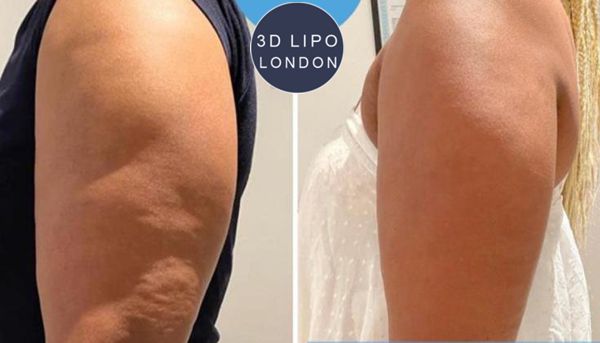
Sophie, 35 - Marylebone
After 8 sessions: 70% reduction in cellulite dimpling
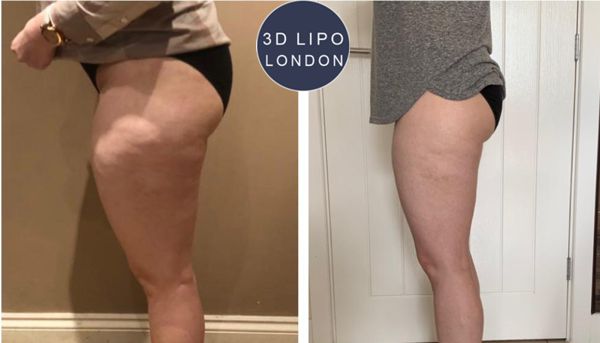
Emma, 42 - Baker Street
After 6 sessions: Significant smoothing of skin texture

Sarah, 38 - Westminster
After 10 sessions: 75% improvement in cellulite appearance
Service Areas - Cellulite Treatment Locations We Serve
Proudly Serving Central London & Surrounding Areas
Primary Service Areas:
- Marylebone (W1H)
- Baker Street (NW1)
- Fitzrovia (W1T)
- Mayfair (W1K)
- Oxford Circus (W1B)
Also Serving:
- Paddington (W2)
- Bond Street (W1S)
- Regent's Park (NW1)
- St John's Wood (NW8)
- Westminster (SW1)
Extended Areas:
- Bloomsbury (WC1)
- Belgravia (SW1X)
- King's Cross (N1)
- Covent Garden (WC2)
- Soho (W1D)
Can't see your area? Call us - we serve all of Central London and have clients traveling from across the capital for our cellulite treatments!
Book Your Cellulite Treatment Today
Ready to achieve smoother, firmer skin? Our expert team at the premier cellulite clinic Central London is here to create your personalized treatment plan. During your complimentary consultation, we'll:
- Assess your cellulite grade and pattern
- Discuss your goals and expectations
- Recommend the best treatment package
- Explain the treatment process in detail
- Provide a detailed quote with package options
- Answer all your questions about cellulite reduction
Find Cellulite Treatment Near Me in Central London
📍 3D Lipo London - Marylebone Location
Address: 82 York Street, Marylebone, London W1H 1QP
Phone: 07763 566 574
Email: info@3dlipolondon.com
Nearest Stations:
- Baker Street Station - 5 minute walk (Jubilee, Metropolitan, Circle, Hammersmith & City lines)
- Marylebone Station - 3 minute walk
- Edgware Road Station - 7 minute walk
- Bond Street Station - 10 minute walk
Parking Options Near W1H 1QP:
- On-Street Parking:
- York Street - Pay & Display (Mon-Fri 8:30am-6:30pm, Sat 8:30am-1:30pm)
- Crawford Street - Resident/Pay & Display bays
- Montagu Square - Limited metered parking
- Upper Montagu Street - 2-hour maximum stay
- Car Parks (Closest First):
- Chiltern Street Car Park - 2 min walk (W1U 7PA) - £4.40/hour
- Portman Square Car Park - 5 min walk (W1H 7BG) - £4.80/hour
- NCP Marylebone - 6 min walk (W1G 8EP) - £5.00/hour
- Q-Park Harley Street - 7 min walk (W1G 7JL) - £5.50/hour
- Selfridges Car Park - 10 min walk (W1A 2LR) - £6.00/hour
Opening Hours:
- Monday - Friday: 9:00 AM - 7:00 PM
- Saturday: 9:00 AM - 7:00 PM
- Sunday: Closed
Walk-ins Welcome (subject to availability) | Same-Day Bookings Available
Find Us on Google Maps
Popular Searches for Cellulite Treatment in London
What Our Clients Search For:
- Cellulite treatment near Baker Street
- Cellulite clinic near Marylebone
- Cellulite reduction Central London
- Anti-cellulite treatment Marylebone
- Cellulite therapy clinic Baker Street
- Best cellulite clinic Central London
- Top cellulite treatment Marylebone London
- Affordable cellulite treatment near Baker Street
- Advanced cellulite reduction in Central London
- Professional cellulite treatment London
- Cellulite removal clinic Marylebone
- Non-surgical cellulite treatment
Why Choose Our Cellulite Clinic in Central London?
| Our Cellulite Services | What's Included | Benefits |
|---|---|---|
| Single Session | Assessment + Treatment | Try before committing |
| 6 Session Package | Full course + Progress tracking | 60-70% improvement typical |
| 10 Session Package | Comprehensive program + Maintenance | Maximum 75% improvement |
Advanced Cellulite Treatments Available
Our Specialized Cellulite Services Include:
- Radiofrequency Cellulite Treatment London: Deep tissue heating for collagen stimulation
- Shockwave Therapy Marylebone: Breaking fibrous bands for smoother skin
- Cellulite Massage Central London: Enhanced circulation and drainage
- Wood Therapy Treatment: Traditional body sculpting technique
- Combination Cellulite Therapy: Multi-technology approach for best results
- Maintenance Cellulite Programs: Keep your results long-term
- Express Cellulite Sessions: Quick treatments for busy schedules
- Full Body Cellulite Treatment: Address multiple areas comprehensively
Transform Your Skin with London's Premier Cellulite Treatments
Join thousands of satisfied clients who have discovered smoother, firmer skin with our advanced cellulite reduction technology. Experience the ultimate professional cellulite treatment Marylebone that delivers visible results with no downtime. Book your free consultation today at our cellulite clinic Baker Street and let us create your personalized journey to cellulite-free skin.
Get in Touch
📍 82 York Street, London W1H 1QP
📞 07763 566 574
✉️ info@3dlipolondon.com
Opening Hours
Monday - Friday: 9:00 AM - 7:00 PM
Saturday: 9:00 AM - 7:00 PM
Sunday: Closed
Professional cellulite treatment London services throughout Greater London including Marylebone, Mayfair, Fitzrovia, Baker Street, Oxford Street, Regent's Park, St John's Wood, Westminster, and surrounding areas. Convenient access from Baker Street, Marylebone, and Edgware Road stations for your cellulite reduction London. Experience the ultimate in anti-cellulite treatments and skin smoothing therapy at our state-of-the-art cellulite clinic Central London.
🚇 Transport Links
- • Baker Street - 5 min walk
(Jubilee, Metropolitan, Circle, Hammersmith & City lines) - • Marylebone Station - 3 min walk
- • Edgware Road - 7 min walk
- • Multiple bus routes on Baker Street & Marylebone Road
📍 Nearby Landmarks
- • Regent's Park - 7 min walk
- • Oxford Street Shopping - 10 min walk
- • Madame Tussauds - 5 min walk
- • Marylebone High Street - 4 min walk
- • Selfridges - 12 min walk
Perfect for lunch-hour treatments or combining with your Central London shopping and errands!